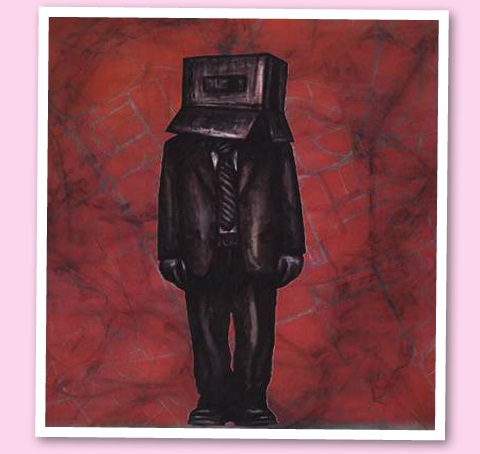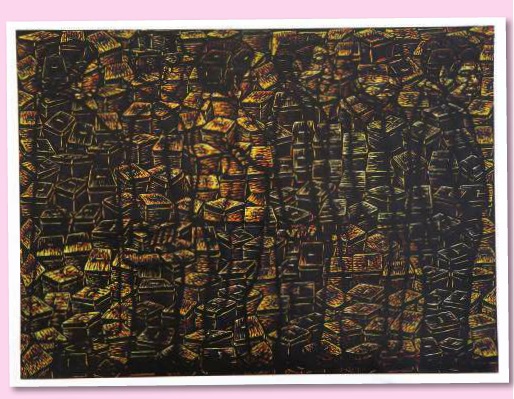
By Nathan Kiwere
Following the social and political mayhem that was engendered by the botched 2007 general elections in neighbouring Kenya, politicians and the public went into an unprecedented frenzy, outshouting each other to prove culpability in what turned out to be a national festival of hooliganism. As they say, the rest is now history.
Over half a decade later, Peterson Kamwathi, a young Kenyan artist took a deep reflection on the events of the political bedlam and picked up his tools to illustrate in unequivocal tones his take on the ordeal.The result was a solo drawing exhibition in June 2013 at the Goethe-Institute in Nairobi.
His use of charcoal compounded the already dark moments depicted therein and the gloom that results from the actions of the few against the innocent.
Code-named “SittingAllowance,” the show comprised eight core charcoal on paper drawings that symbolized the local and international institutions that were an integral part in the electoral process of 2007, giving room for reflection rather than confrontation or making judgments.
That show gripped the Kenyan public to the extent that it remains among the most critiqued art exhibitions of all time in the country’s contemporary visual history because of the transcendent power that it cast like a spell on the audience.
His use of charcoal compounded the already dark moments depicted therein and the gloom that results from the actions of the few against the innocent. The works seemed to silence and give new meaning to the erstwhile raucous voices of the public.
This was a classic exemplar of the place of art in dictating social discourse. It has been said that art has its own power in the world, and in as much a force in the power play of global politics today as it once was in the arena of cold war politics.
Across historical epochs and cultures, art has played a monumental role either in the service of leadership or against the excesses of powers that be. As they respond to contemporaneous events and politics, the arts take on political as well as social dimensions, usually becoming themselves a focus of controversy and even a force of political as well as social change.
Art in the Service of Politics: One way to kill a shadow is to shine a light on it
In the developed world where the public generally has a heightened sense of awareness about the power of art, it is easier to employ art as a propaganda tool to achieve certain ends. If propaganda is understood as the calculated manipulation of information designed to shape public opinion and behavior to predetermined ends, as desired by the propagandist, then clearly art has been at the centerfold of this enterprise for eons.
After attaining Independence in the 1960s, Senegalese President Leopold Senghor, one of the greatest poets of his time, dedicated over 25% of the national budget towards the arts. His agenda could have been partly to use the arts in a country that was hugely conscious about rediscovering their cultural identity after decades of colonial subjugation, to further his own interests.

Nearly half a century later, Abdulaye Wade, another leader in the same country, commissioned one of the most ambitious sculptural projects in African history, the famous African Renaissance Monument, a 49-metre tall bronze statue, much to the chagrin of the public because of the colossal amounts of resources invested therein.
They say that one way to kill a shadow is to shine a light on it. It appears artists are hard-pressed to take their art to a level that transcends their personal ambition on the one hand, and the glorification of aesthetics on the other, and use it to answer a call that is higher than them.
Ugandan print maker Fred Mutebi and ceramist Bruno Sserunkuuma have shouted themselves horse through their works for over 25 years now and yet their voices seem to be constantly lost in translation or simply appealing to a less sophisticated audience that does not appreciate such controversy.
This brings up the question of if the effectiveness of art in certain social contexts plays a propaganda role.
 The Independent Uganda: You get the Truth we Pay the Price
The Independent Uganda: You get the Truth we Pay the Price


